The choice of a motherboard always depends on one criterion: money. Well, given modern realities, availability is worth mentioning. We will consider the compromise options of the lower-middle price category another time, and today we will pay attention to a very interesting option from the upper-middle price category – ASUS ROG STRIX Z590-E GAMING WIFI.
Specifications
- Form factor: ATX (305 × 244 mm).
- Processor socket: Socket LGA1200.
- System logic: Intel Z590 Chipset.
- RAM: 4 × DIMM, DDR4-2133 … 5333, up to 128 GB.
- Звук: ROG SupremeFX 7.1 (ALC4080 + Savitech SV3H712).
- Wired network: 2 × 2.5 Gbit Ethernet (Intel I225-V).
- Wireless network: Wi-Fi 802.11ax 6E 2×2, Bluetooth 5.2 (Intel Wi-Fi 6 AX200).
- Expansion slots: 3 × PCI-Ex16.
- Drives: 6 × SATA III 6 Gb / s, 4 × M.2 NVMe / SATA III 6 Gb / s 2280/22110.
- Rear panel: 1 × USB 3.2 Gen 2 × 2 port Type-C, 3 × USB 3.2 Gen 2 port Type-A & Type-C, 4 × USB 3.2 Gen 1 Type-A, 2 × USB 2.0 Type-A, HDMI , DisplayPort, 2 × SMA, 2 x RJ35, 5 × 3.5 mm audio jack, 1 × S / PDIF output, BIOS FlashBack and Clear CMOS buttons.
At the time of this writing, the price of the motherboard is 31,000 rubles.
Equipment
The box is small, which indirectly indicates a standard package.
However, the inner volume of the box does not always reflect the filling. In the case of the STRIX Z590-E GAMING WIFI, we added all the cables, antennas and cords necessary for launching.
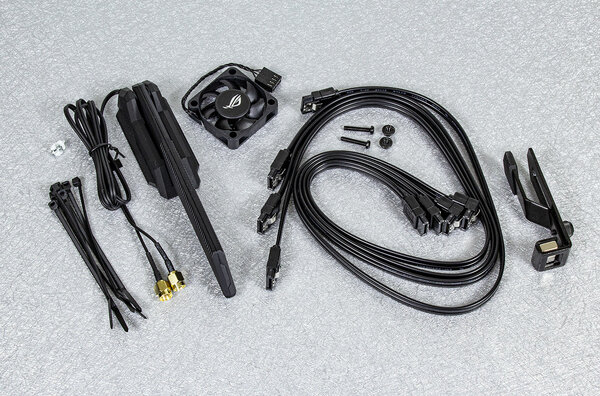
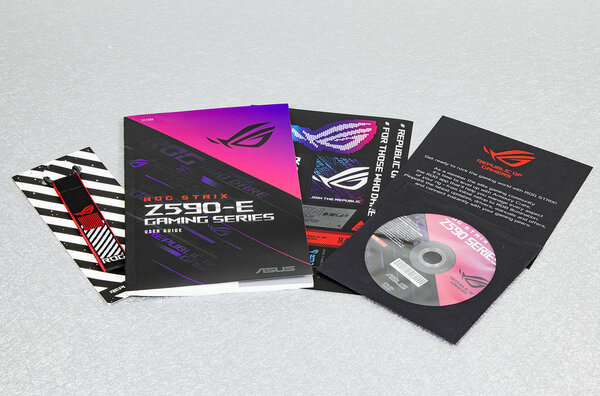
Appearance
From the mass of black motherboards, the ROG version of the STRIX Z590-E GAMING WIFI is visually distinguished by colored inserts on the heatsinks of the processor power system and chipsets. For the rest, from two meters away – a typical representative of the gaming line: impetuous (and even somewhat aggressive) design, powerful radiators of the VRM cooling system.
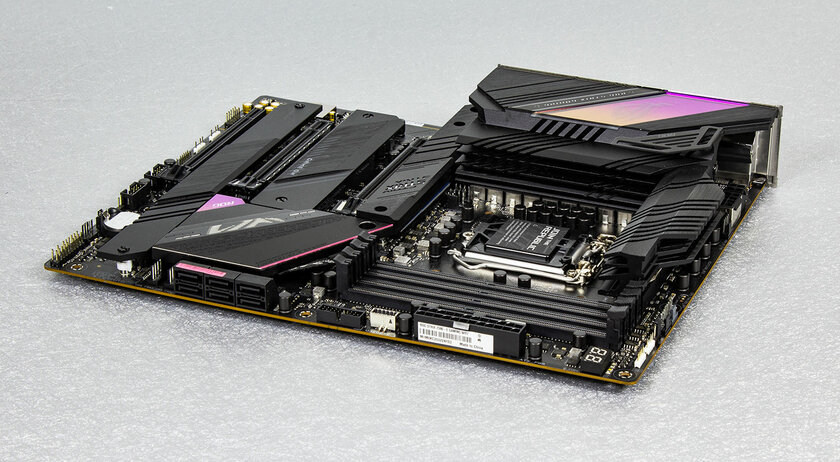
An attentive reader has probably noticed one more difference between this motherboard and all previously studied ones: the Z590-E GAMING WIFI does not have PCI Express x1 slots! Only PCIEx16 in the amount of three pieces. Of these, the “real” 16x is only the one that is closer to the processor. The first and second slots (counting from the processor) “hang” on the processor, the third – on the system logic (chipset).
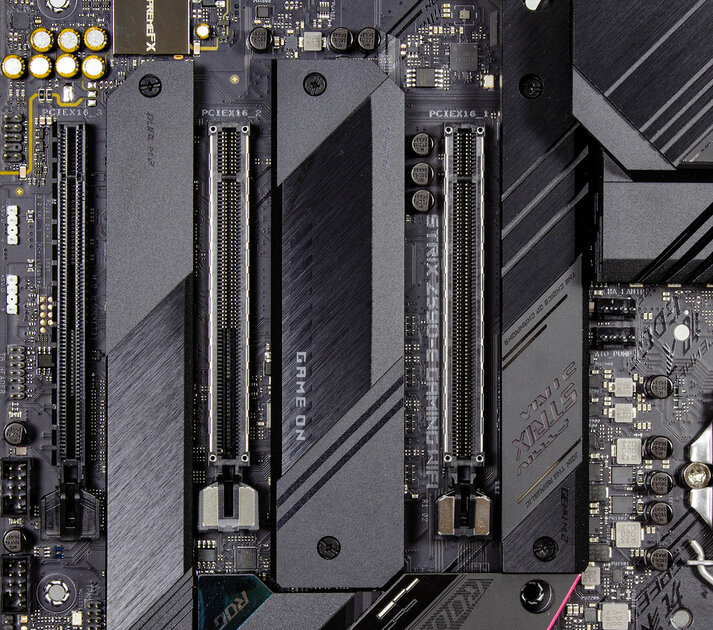
The second has 8 lines, the third has four.

In general, it is a completely normal option for a system where, apart from a video card and another expansion card (sound card, which controller, capture card, etc.), no devices are expected inside the system unit.
The freed space is given to M.2 connectors. There are already four of them, all with radiators. One of the radiators is illuminated.
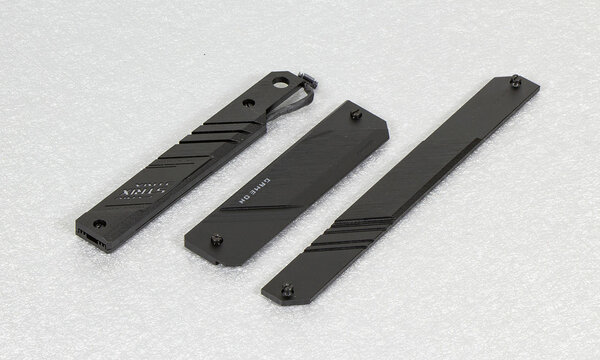
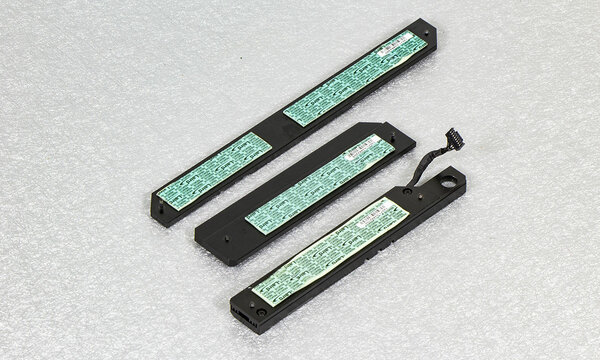
All four support the NVMe protocol (that is, it transfers data through PCI Express lines), only the fourth slot can work with SATA M.2 drives. M.2_1 only works with 11th generation processors.
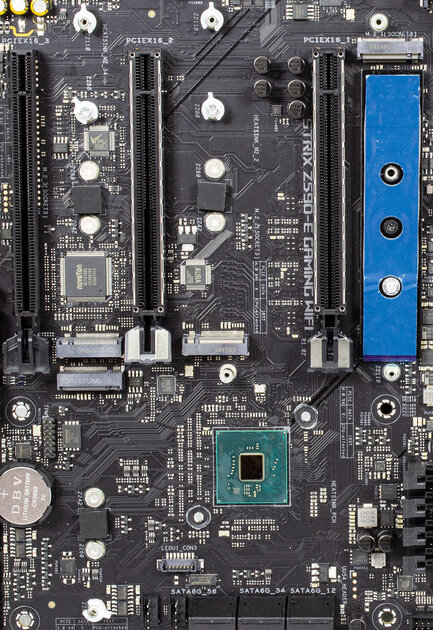
For convenient mounting of the SSD, easy-to-use plastic drive retainers are provided. Practical when changing drives frequently.
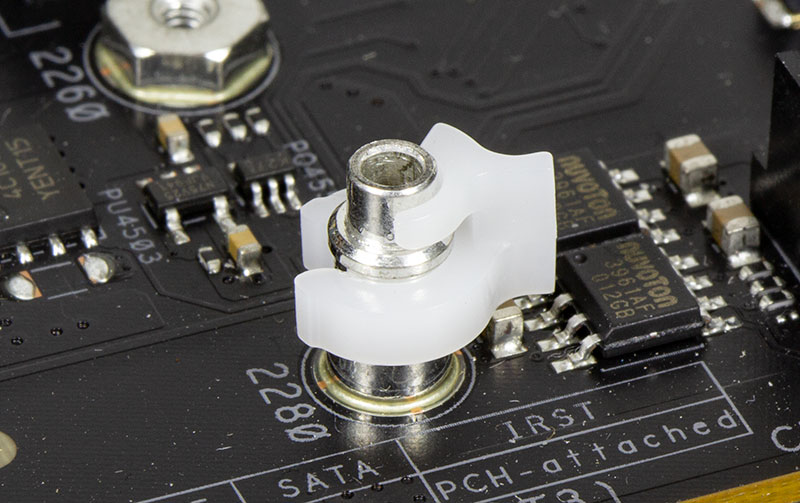
The Z590 chipset is soldered between the M.2 connectors and other connectors.
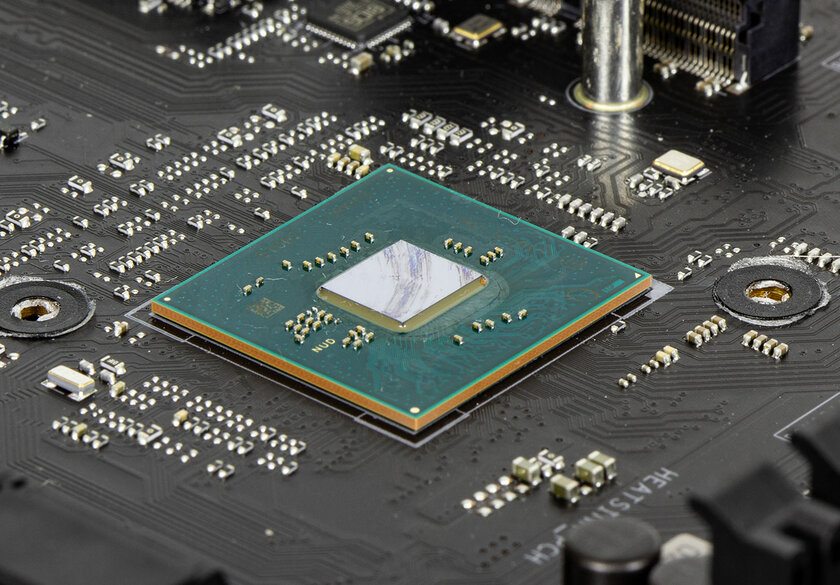
In terms of the internal structure, it differs little from the 490th, from the main one there is a wider DMI bus and 20 PCI Express lanes instead of 16. We also added 20 Gigabit USB ports in the amount of three pieces.
The chipset is cooled by a large aluminum heatsink with RGB lighting.
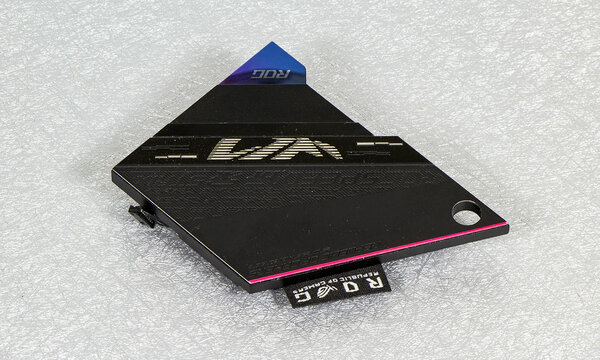
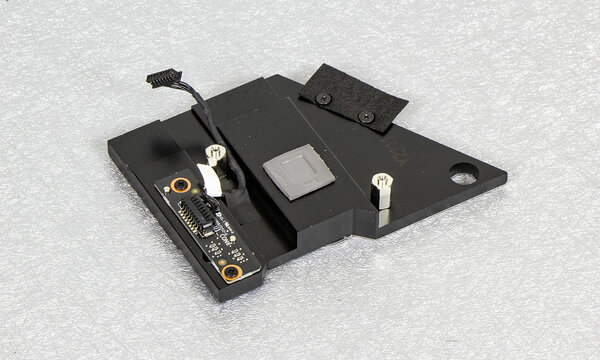
Six corresponding connectors were installed under the SATA drives in one corner block.
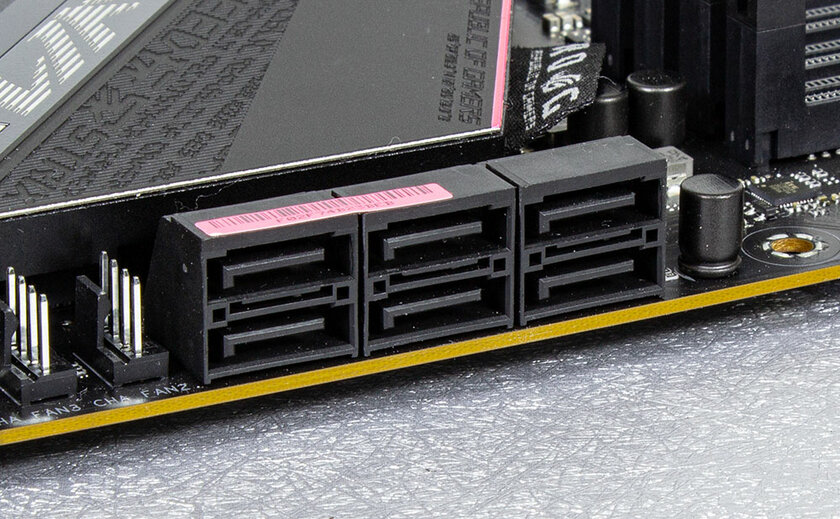
The remaining space from expansion slots and slots for drives is occupied by a processor socket, four DIMM sockets and power converters.
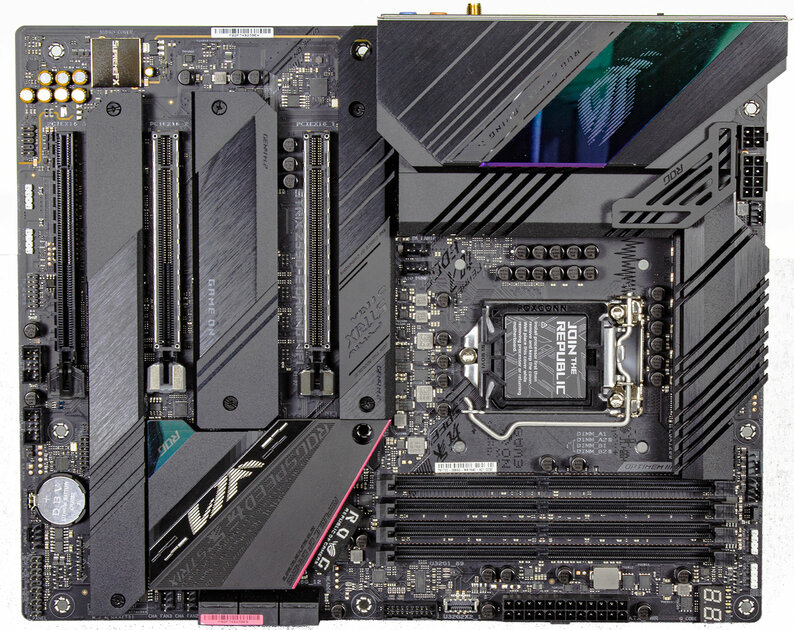
The LGA1200 socket is surrounded by massive aluminum structures. This is a CPU VRM heatsink and a dual RGB heatsink on the first M.2 slot.
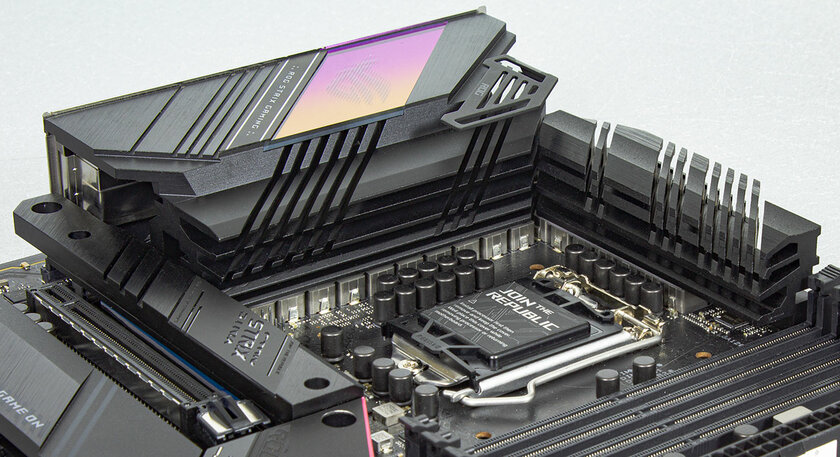
Both heatsinks grow from year to year, and it’s not in vain that motherboard compatibility lists are drawn up for tower coolers. Not every cooling system will fit into an aluminum palisade enclosure.
Just to imagine: this is all a radiator. Even the lid above the rear panel with integrated lighting is also part of it.
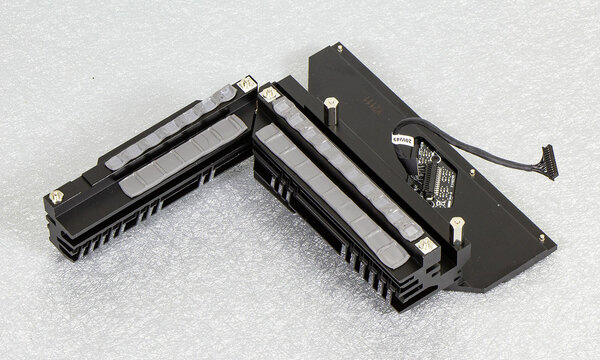
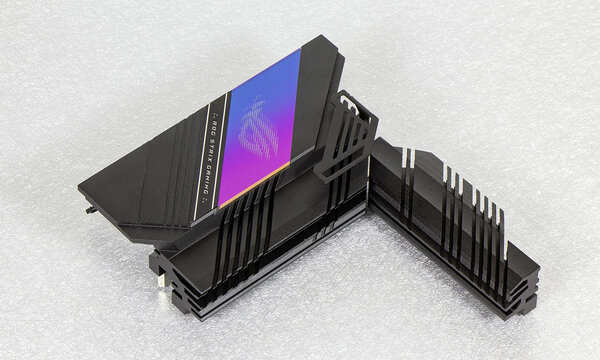
But this may not be enough when using a liquid cooling system and top-end multi-core stones overclocked with increasing voltage. Therefore, the kit includes a fan that is mounted on a bracket and connected to the corresponding connector next to it. It works quietly and copes well with mixing air currents in the space around the socket.
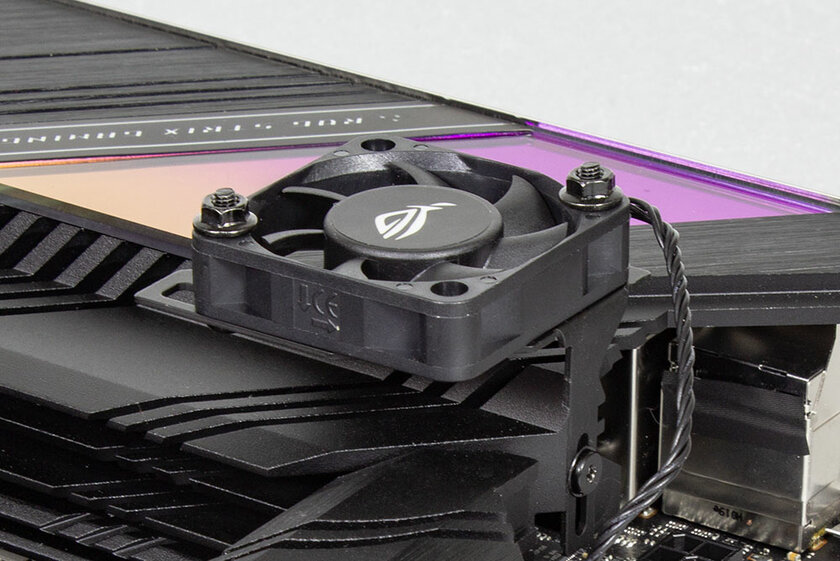
What is under such a radiator? 17-phase power supply system.
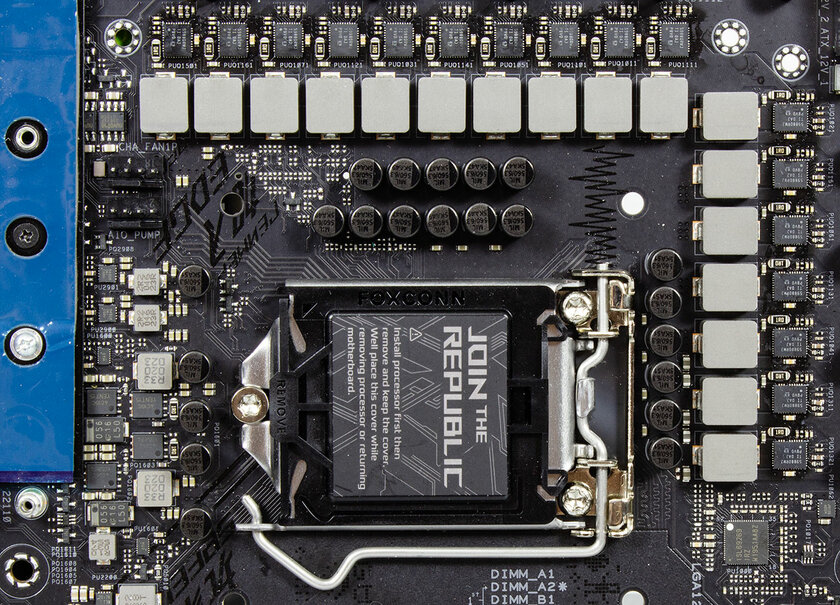
Each of the CSD59880RWJ keys is capable of withstanding up to 90 amperes. The converter is controlled by the Renesas ISL69269 controller.
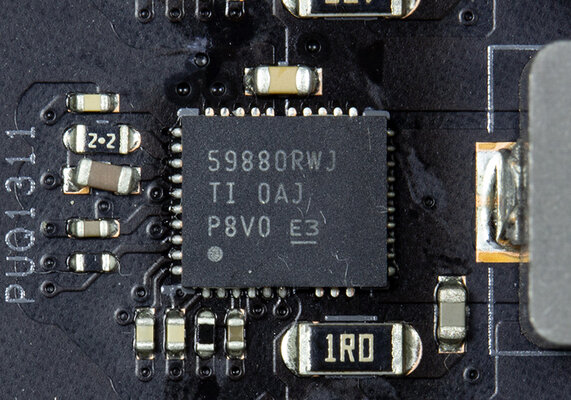
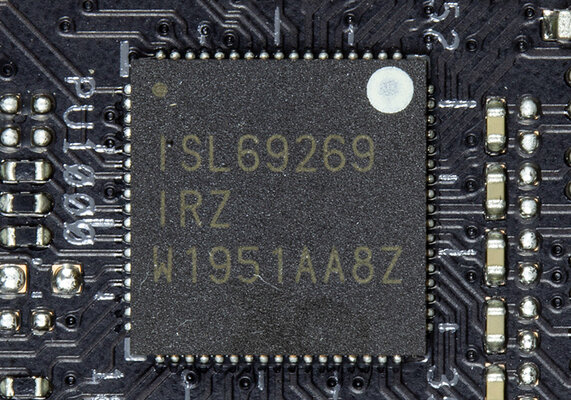
The back panel does not look empty: 10 USB connectors, two video outputs, two RJ45 from wired 2.5 Gigabit adapters, SMA connectors for connecting antennas to the built-in Wi-Fi module, five minijacks, an optical output and two buttons.

The ax wireless network and Bluetooth version 5.2 are based on the Intel Wi-Fi 6 AX200 controller.
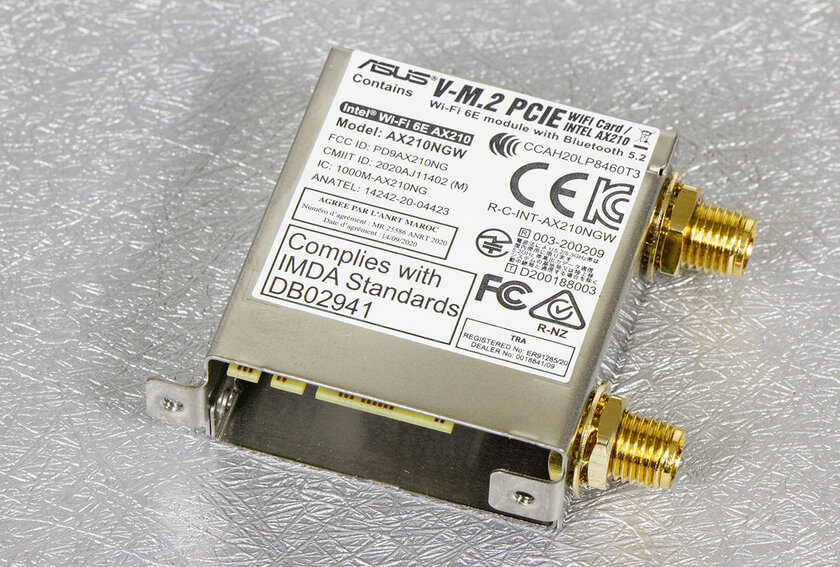
Wired networks are based on Intel I225-V controllers, both 2.5 Gigabit.
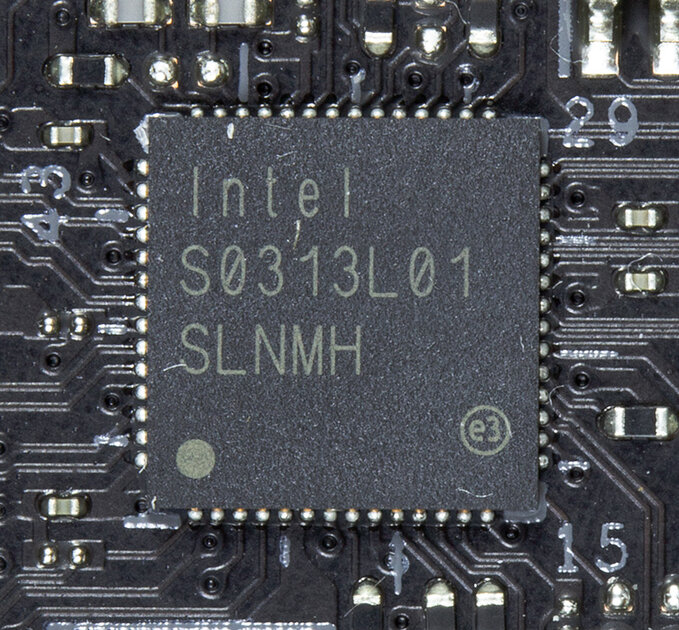
Sound – proprietary SupremeFX 7.1, built on the basis of the ALC4080 codec and the Savitech SV3H712 amplifier. The power supply of the analog part of the audio path is additionally filtered to reduce the level of background noise; a high-quality element base is used.
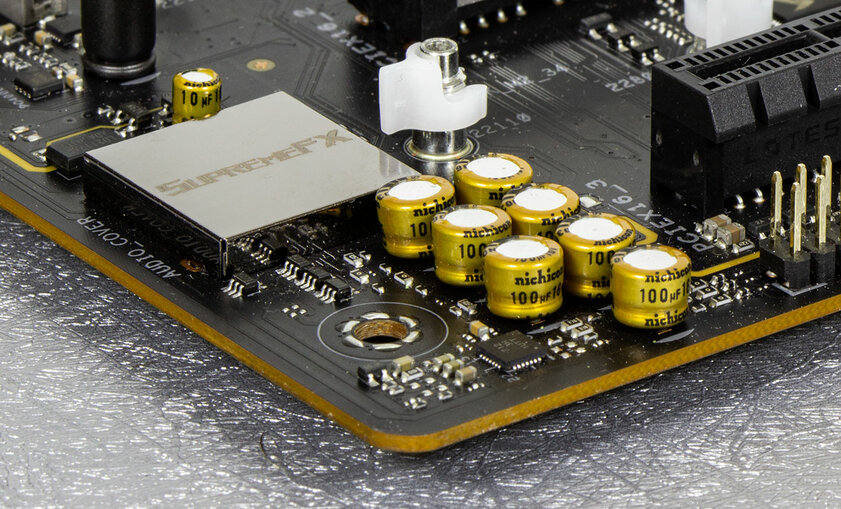
To connect fans, the board has eight four-pin connectors with a maximum current of up to 1 A; a consumer with a power of up to 36 W can be connected to the W_PUMP + connector. For RGB tapes, there is one analog and three addressable connectors.
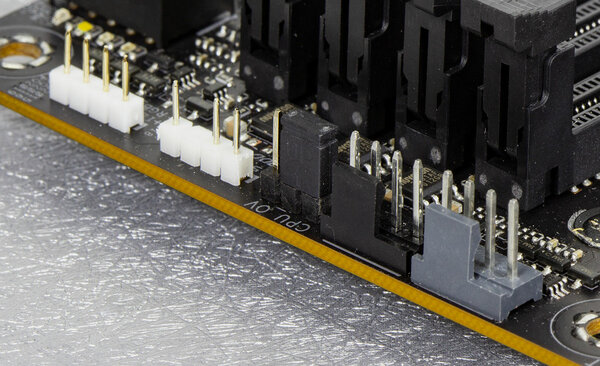
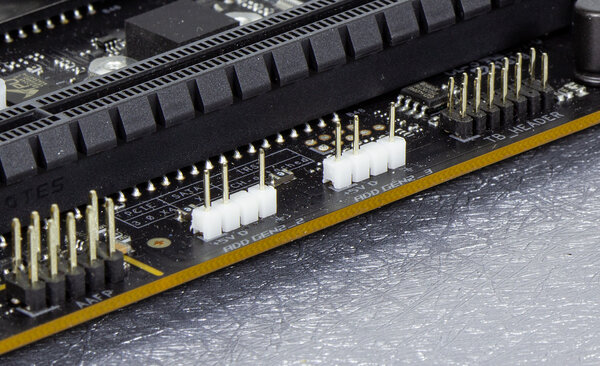
A double POST indicator is soldered in the corner of the board: a two-character “screen” and four separate LEDs signaling the initialization of the processor, RAM, video card and the transition to the OS boot process.
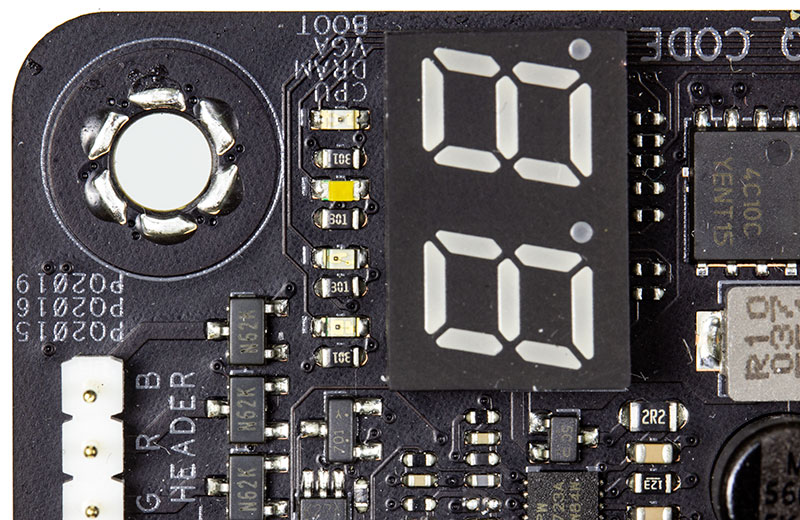
UEFI shell BIOS
The shell, unchanged in its structure for about four years (which is good), allows flexible adjustment of the operation of all components of the board. By default, the simple (EZ) mode is enabled, so as not to overload the user with unnecessary information. Basic information about the system is displayed on the screen.
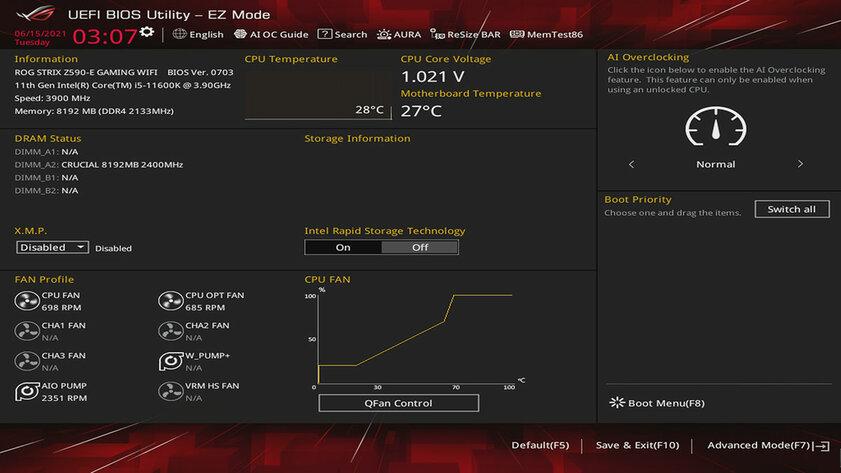
The My Favorites section will be useful for those who often change the same parameters. In order not to wade into the jungle of the settings tree every time, you can display them for quick access to this section.
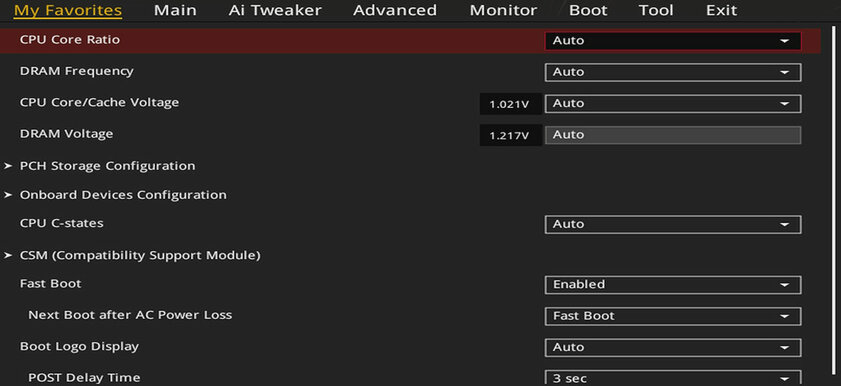
The Main section has collected the most basic board settings – time, date, BIOS versions, general information about the system.
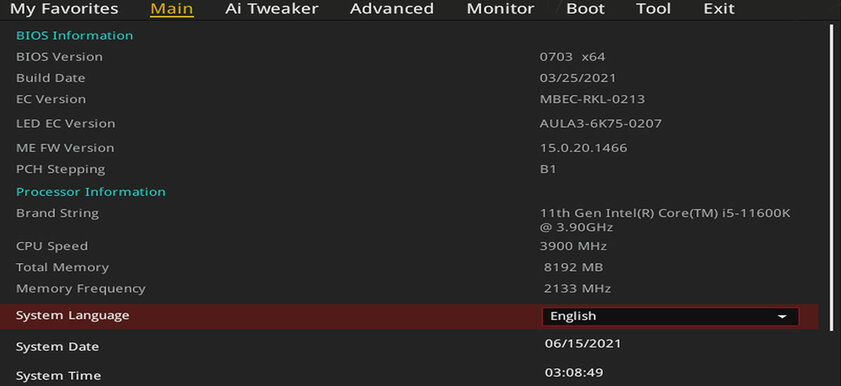
Ai Tweaker has the most desirable and interesting settings that allow you to increase system performance through overclocking or changing operating parameters. Voltages, frequencies, timings, multipliers. Entire subsections are devoted to fine-tuning the logic of the power converter, internal control of the consumption of processor components. There are controls for secondary voltages (reference, power supply of buffer stages, and others). Without a good knowledge of the hardware, it is better not to go into the depths of the Ai Tweaker section, and if “just overclocking” is needed, then the logic of the motherboard can independently find the limit of the capabilities of this or that processor.
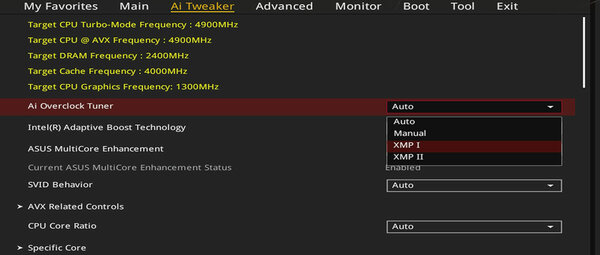
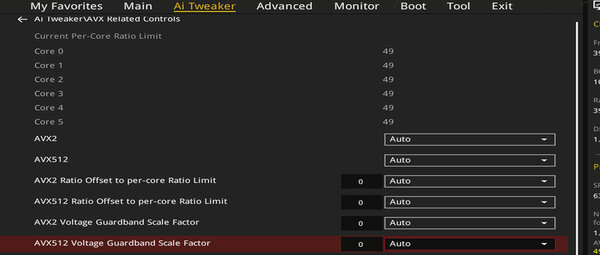
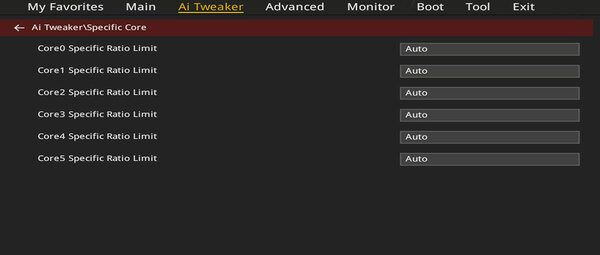
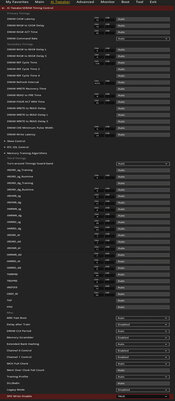
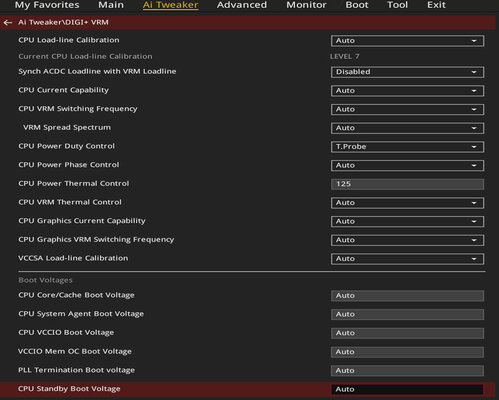
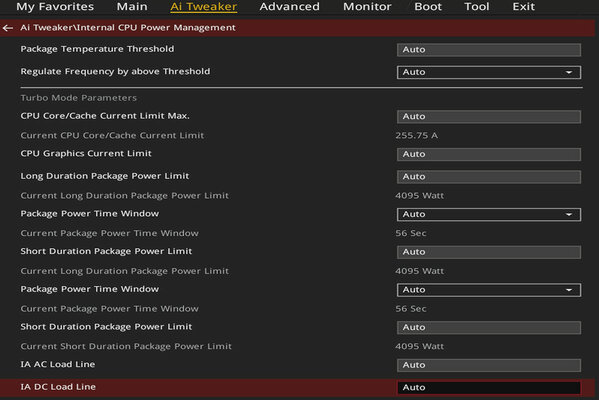
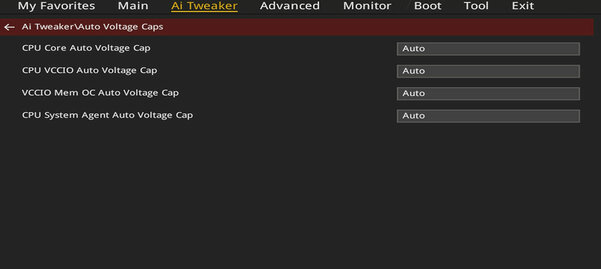
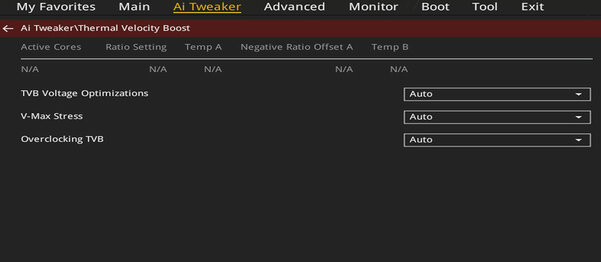
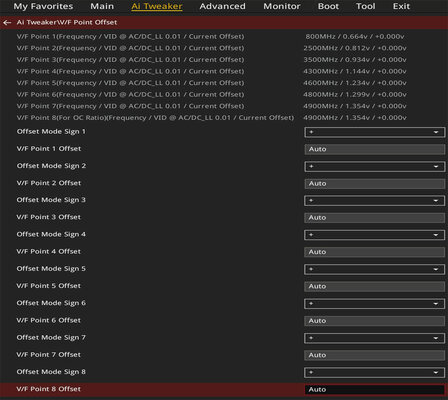
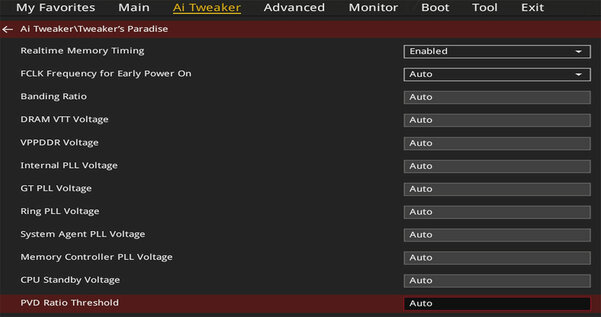
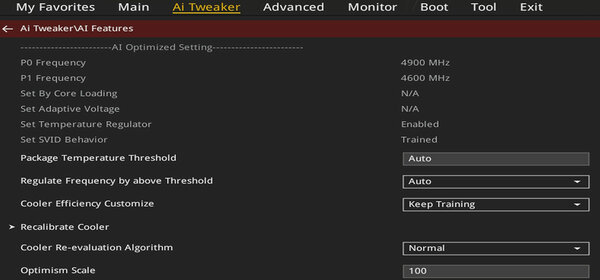

Advanced contains control of additional controllers soldered on the board, secondary functions, and drives. But there is also something that for some reason was not included in the Ai Tweaker section. For example, the CPU Configuration submenu.
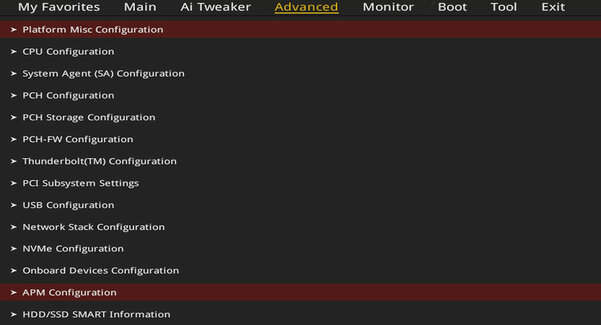
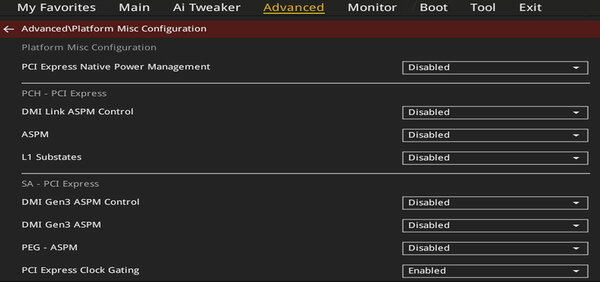
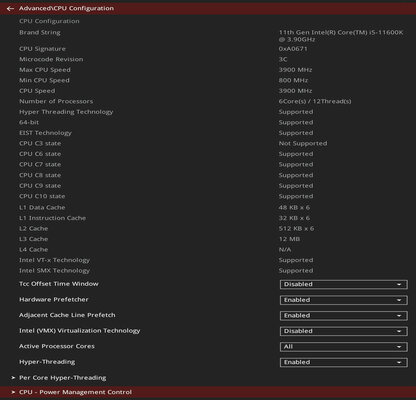
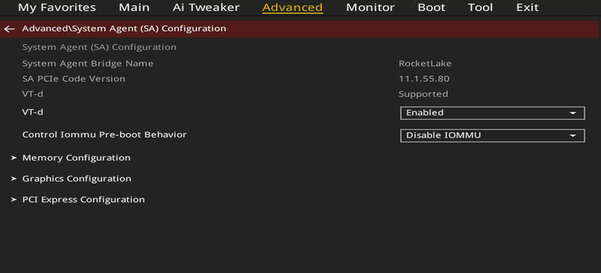
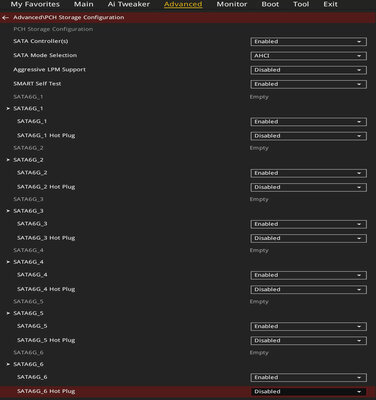
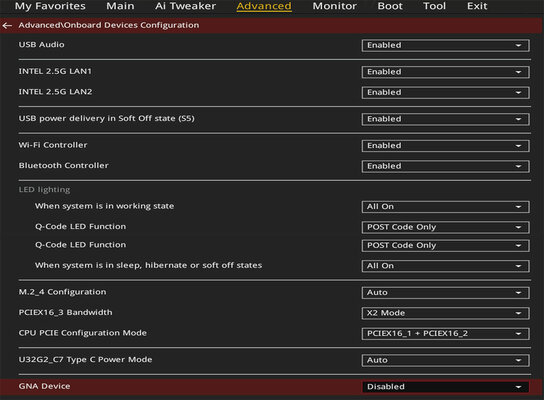
The Monitor contains all the readings of the sensors on the board (you can add several of your own to the built-in ones by connecting additional temperature sensors to the corresponding connectors). It shows the speed of the fans, the temperature in the key nodes, the value of the voltages supplied to the board and its individual nodes.
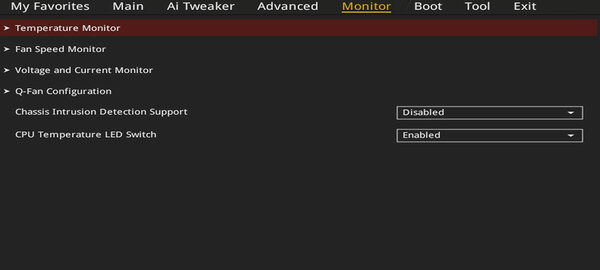
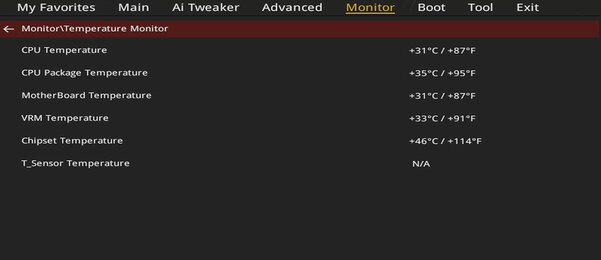
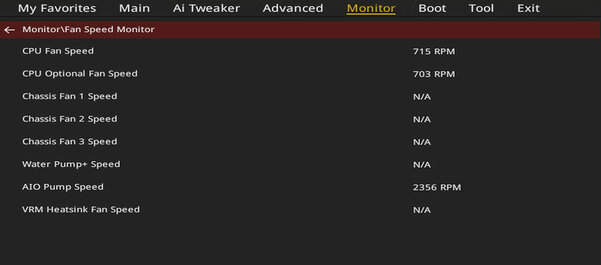
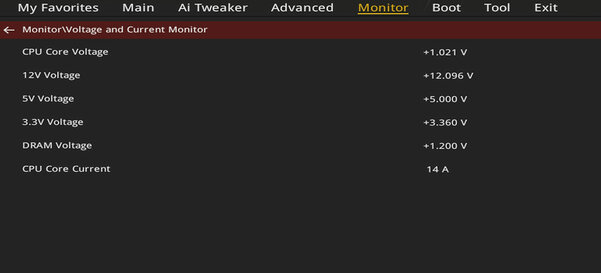
The Q-Fan subsection allows you to adjust the fan behavior depending on a particular temperature value. You can select both basic profiles and independently set the curve of the dependence of the speed on the heating level of the components.
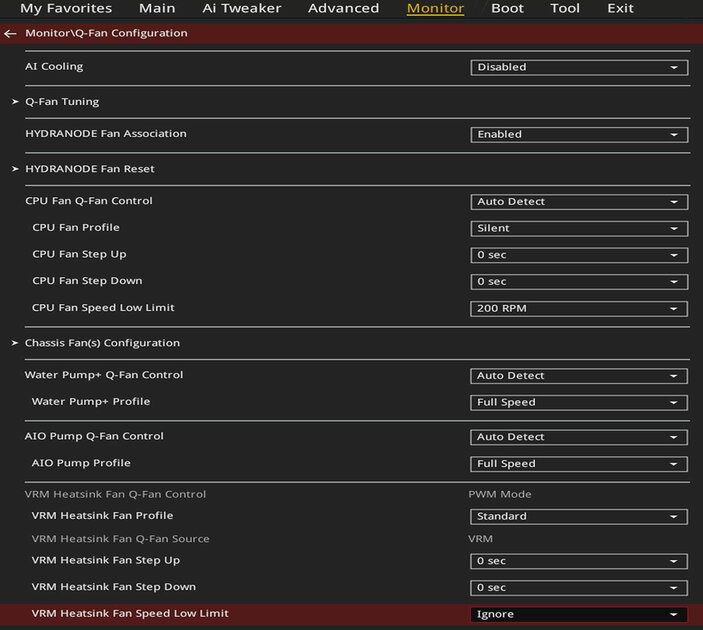
The Tool section has collected useful mini-utilities, of which there are more and more every year.
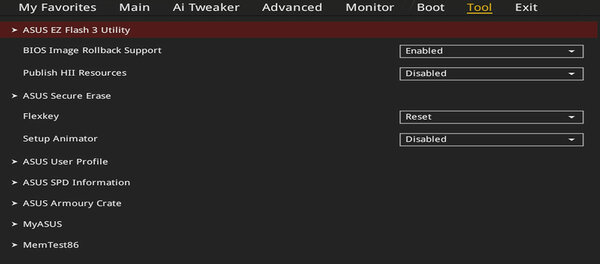
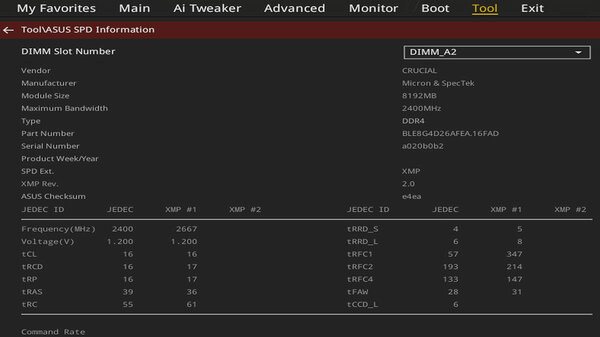
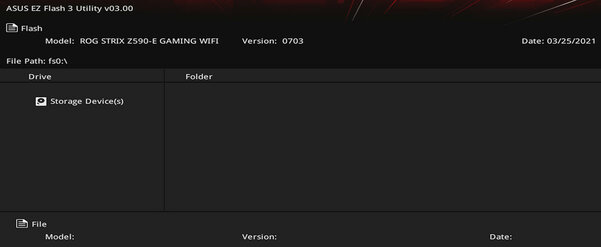
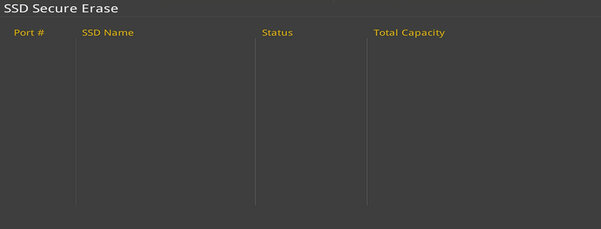
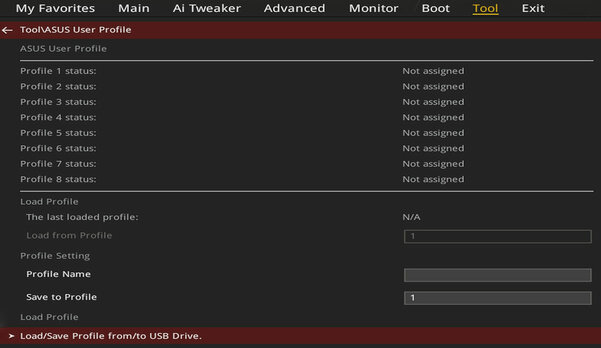
A useful innovation is the ability to run a RAM test directly from the BIOS. In some situations, this is very helpful in quickly identifying the cause of system instability.

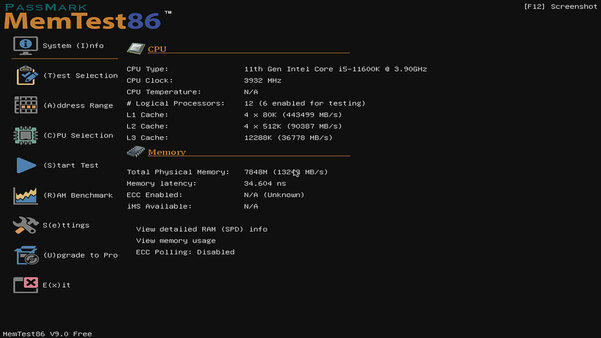
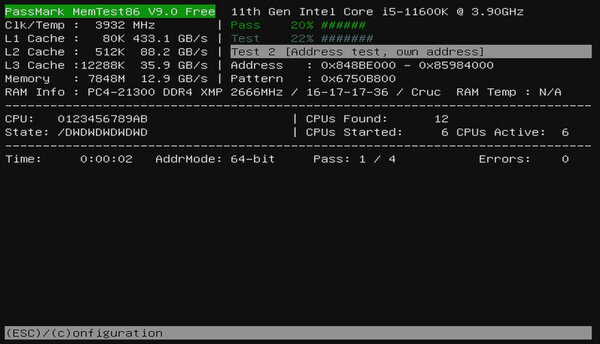
Review
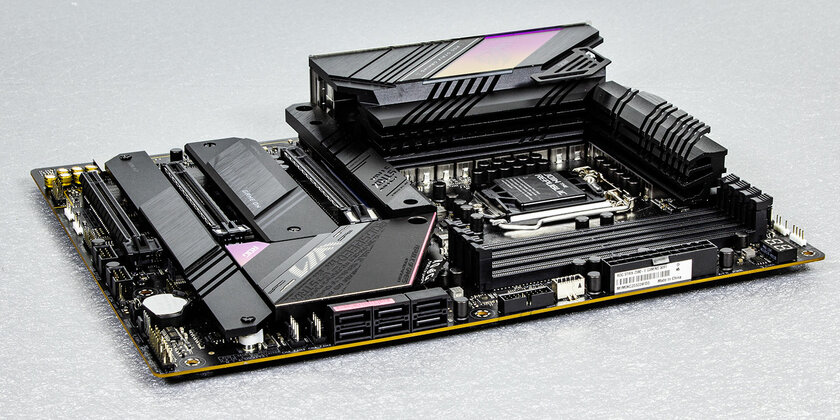
STRIX Z590-E GAMING WIFI is an excellent base for building a productive system with Intel 10th and 11th generation processors. It makes sense to pay attention to it for those who are not indifferent to overclocking, fine-tuning the system for themselves. This motherboard is not positioned as “the best solution for overclocking”, but, in fact, it is a certain balance in terms of price ratio (among motherboards based on Z590), quality and a set of useful tools. It is also pleasing that various decorations such as RGB backlighting are not stuck where necessary, but are organically built into the general view of the board, do not annoy with a blinding glow in the dark and can be easily turned off if necessary. At the same time, if you want more illumination, you can use four ports for RGB tapes.
pros
- Sophisticated wiring.
- Powerful power and cooling system.
- The presence of two 2.5 Gigabit Ethernet and Wi-Fi ax.
- Practical and convenient BIOS Setup menu.
- Unobtrusive backlighting.
May not like
- Price.
Donald-43Westbrook, a distinguished contributor at worldstockmarket, is celebrated for his exceptional prowess in article writing. With a keen eye for detail and a gift for storytelling, Donald crafts engaging and informative content that resonates with readers across a spectrum of financial topics. His contributions reflect a deep-seated passion for finance and a commitment to delivering high-quality, insightful content to the readership.







